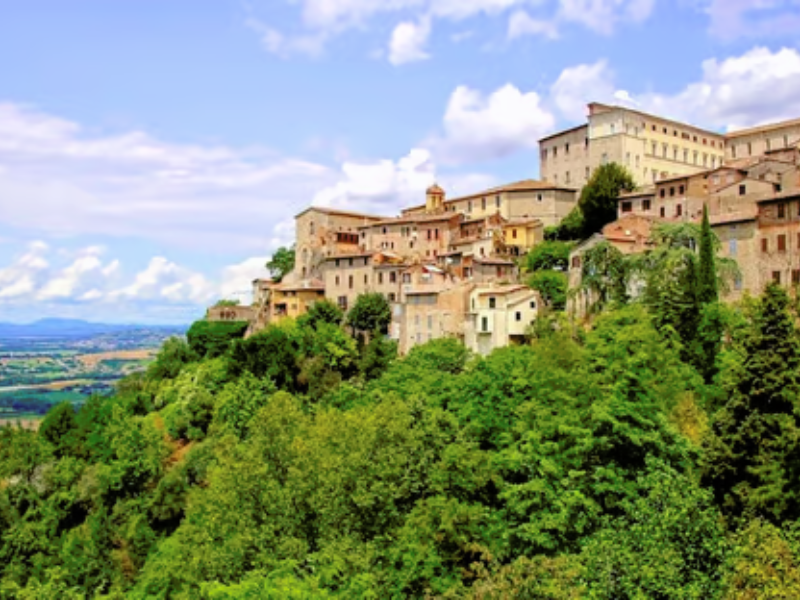Italy is a country renowned for its rich culinary tradition that varies greatly from region to region. From the hearty pasta dishes of the south to the delicate seafood of the coastal areas, Italian cuisine is a delicious journey waiting to be discovered. In this article, we will take a closer look at the regional delicacies of Italy and explore the unique flavors and ingredients that make each region’s cuisine so special.
1. Introduction to Italian Cuisine
Italian cuisine is known for its use of fresh, high-quality ingredients and simple preparation techniques that allow the flavors of the food to shine through. From pasta and pizza to gelato and espresso, Italian cuisine has something for every palate.
2. The North: Lombardy
Lombardy, in northern Italy, is known for its rich, creamy risotto dishes. Risotto alla Milanese, a saffron-infused risotto dish, is a regional specialty that is a must-try for anyone visiting the region. Other popular dishes include ossobuco (braised veal shanks) and Panettone, a sweet bread traditionally served during the Christmas season.
3. The North: Emilia-Romagna
Emilia-Romagna is home to some of Italy’s most famous foods, including Parmigiano-Reggiano cheese, Prosciutto di Parma, and traditional balsamic vinegar. The region is also known for its pastas, such as tortellini and tagliatelle, which are often served with rich meat-based sauces.
4. The North: Veneto
Veneto, home to the iconic city of Venice, is known for its fresh seafood dishes, including risotto al nero di seppia (risotto with cuttlefish ink) and baccalà mantecato (whipped salt cod). The region is also famous for its wines, including Prosecco and Amarone.
5. Central Italy: Tuscany
Tuscany is perhaps one of Italy’s most famous culinary regions, known for its hearty soups, such as ribollita and papa al pomodoro, as well as its succulent meats, like bistecca alla Fiorentina (Florentine steak). The region is also famous for its wines, including Chianti and Brunello di Montalcino.
6. Central Italy: Lazio
Lazio, home to the capital city of Rome, is known for its simple yet delicious cuisine. Roman dishes often feature ingredients like pecorino cheese, guanciale (cured pork jowl), and fresh pasta. Some regional specialties to try include cacio e pepe (cheese and pepper pasta) and supplì (deep-fried rice balls).

7. Central Italy: Umbria
Umbria is sometimes referred to as the “green heart of Italy” due to its lush landscapes and agricultural abundance. The region is known for its black truffles, which are often used in pasta dishes like strangozzi al tartufo. Other regional specialties include porchetta (roast pork) and lentil soup.
8. Southern Italy: Campania
Campania, located in southern Italy, is known for its vibrant, flavorful cuisine. Neapolitan pizza, made with San Marzano tomatoes and fresh mozzarella, is perhaps the region’s most famous dish. Other regional specialties include spaghetti alle vongole (spaghetti with clams) and sfogliatella, a flaky pastry filled with ricotta cheese.
9. Southern Italy: Sicily
Sicily, the largest island in the Mediterranean Sea, is a melting pot of flavors and influences. The region’s cuisine reflects its rich history, with dishes like arancini (fried rice balls), caponata (a sweet and sour eggplant dish), and cannoli (pastry tubes filled with sweet ricotta cheese).
10. Southern Italy: Puglia
Puglia, located in the heel of Italy’s “boot,” is known for its fresh seafood dishes and simple, rustic cuisine. Orecchiette con cime di rapa (pasta with turnip greens) is a regional specialty, as is burrata cheese, a creamy cheese made from mozzarella and cream. Puglia is also famous for its olive oil, which is considered some of the best in Italy.
11. The Islands: Sardinia
Sardinia, an autonomous region off the coast of Italy, has a cuisine all its own. Dishes often feature ingredients like pecorino cheese, fregula (a type of pasta), and mirto (a liqueur made from myrtle berries). Some regional specialties to try include culurgiones (potato-filled pasta) and porceddu (roast suckling pig).
12. The Islands: Sicily
Although Sicily was mentioned earlier in the article, it deserves another mention for its unique and diverse cuisine. From the Arab-influenced flavors of Palermo to the Greek-inspired dishes of Syracusa, Sicilian cuisine is a blend of cultures and traditions that is truly one of a kind.
13. Italian Street Food
No article about Italian cuisine would be complete without mentioning street food. Whether you’re grabbing a quick slice of pizza in Naples or a porchetta sandwich in Umbria, Italian street food is a delicious and convenient way to sample the local flavors on the go.
14. Conclusion: The Beauty of Italian Cuisine
Italian cuisine is a celebration of fresh, seasonal ingredients and simple yet delicious flavors. From the bustling markets of Rome to the seaside cafes of Sicily, Italy’s culinary landscape is as diverse and vibrant as its people. So next time you find yourself in the boot-shaped country, be sure to savor the regional delicacies that make Italian cuisine so special.
15. Resources for Further Exploration
For those interested in learning more about Italy’s regional delicacies, there are a number of resources available, including cookbooks, culinary tours, and online resources. With a little bit of exploration and an adventurous spirit, you can uncover the delicious flavors of Italy’s diverse regions and savor the beauty of its culinary tradition. Buon appetito!
FAQs about “A Taste of Italy: Discovering the Regional Delicacies of the Boot”
- What makes “A Taste of Italy: Discovering the Regional Delicacies of the Boot” a must-read for food enthusiasts? This book offers a tantalizing exploration of Italy’s diverse culinary landscape, showcasing the unique flavors, ingredients, and traditions of each region. It’s a comprehensive guide for anyone eager to discover the authentic tastes of Italy.
- How does this book highlight the regional delicacies of Italy? “A Taste of Italy” delves into the regional delicacies of Italy by exploring the distinct culinary traditions and specialties of each region, from the northern Alps to the southern shores of Sicily. Readers will embark on a flavorful journey through Italy’s diverse gastronomic heritage.
- Are specific Italian dishes featured in this culinary exploration? Yes, “A Taste of Italy” features a curated selection of Italian dishes that represent the culinary diversity of the country. From risotto in Lombardy to pizza in Naples and gelato in Florence, each dish is accompanied by insights into its regional origins and cultural significance.
- How does this book celebrate the cultural and culinary heritage of Italy? This book celebrates the cultural and culinary heritage of Italy by highlighting the traditions, rituals, and stories behind its most beloved dishes. It explores the role of food in Italian society, from family gatherings to festive celebrations, and showcases the pride Italians take in their culinary traditions.
- Can readers expect to gain practical knowledge and cooking tips from this book? Absolutely! “A Taste of Italy” provides readers with practical knowledge, cooking tips, and recipe ideas to recreate the authentic flavors of Italy in their own kitchens. Whether you’re a novice cook or a seasoned chef, you’ll find inspiration and guidance to embark on a culinary journey through Italy’s rich culinary tapestry.
Advantages:
- Evocative language: The title “A Taste of Italy: Discovering the Regional Delicacies of the Boot” uses descriptive terms to evoke the diverse and rich culinary heritage of Italy, immediately capturing the reader’s interest.
- Cultural immersion: By emphasizing regional delicacies, the title suggests an exploration of the varied culinary traditions and flavors across Italy’s different regions, providing readers with insights into the cultural and historical influences that shape Italian cuisine.
- Gastronomic exploration: Readers can anticipate learning about a wide range of Italian dishes, ingredients, and cooking techniques specific to each region, offering them a comprehensive overview of the diverse culinary landscape of Italy.
- Practicality: By featuring regional delicacies, the title appeals to readers interested in exploring authentic and traditional Italian dishes, providing them with recipes, tips, and insights to recreate the flavors of Italy in their own kitchens.
- Inspiration for travel: The title may inspire readers to visit Italy to experience its regional delicacies firsthand, fostering a deeper connection to Italian cuisine and culture.
Disadvantages:
- Lack of specificity: While regional delicacies are mentioned, the title does not specify which regions or dishes will be explored, leaving readers uncertain about the scope of the content.
- Potential oversimplification: Focusing solely on regional delicacies may oversimplify the richness and complexity of Italian culinary traditions, overlooking lesser-known but equally delicious dishes and regional specialties.
- Accessibility of ingredients: Some regional Italian dishes may require specific ingredients that are difficult to find outside of Italy or major culinary hubs, limiting the practicality of the recipes for some readers.
- Dietary restrictions: Italian cuisine often includes ingredients like cheese, cured meats, and wheat-based products, which may not be suitable for individuals with dietary restrictions or preferences, potentially alienating some readers.
- Cultural appropriation: Without proper context and understanding, celebrating regional delicacies in Italian cuisine could risk appropriating cultural elements without acknowledging their significance or respecting their origins.
















